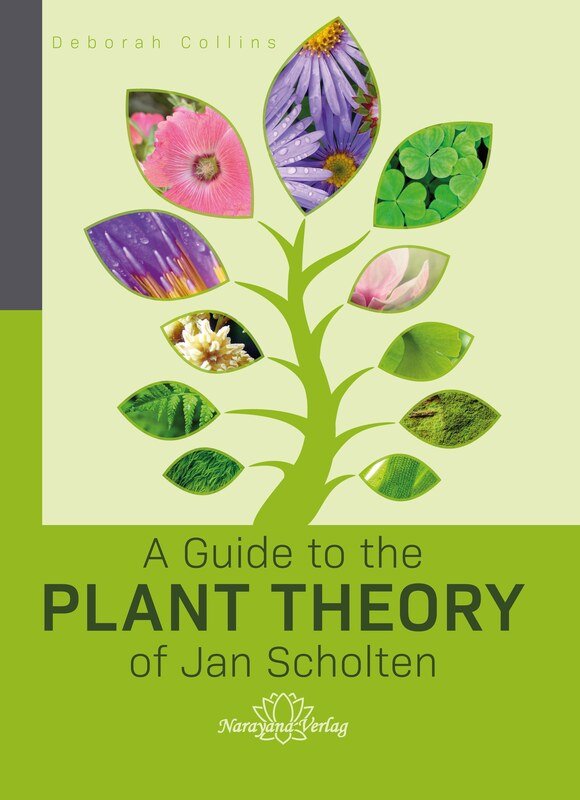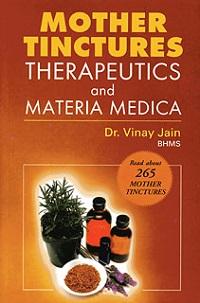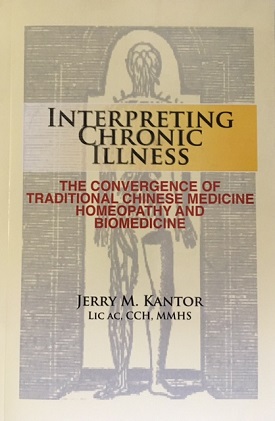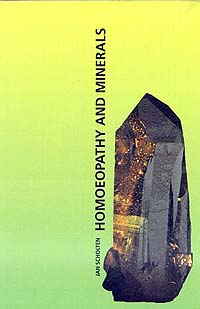Description
Deborah Collins’ highly recommended manual fills a gap. Based on and referring to Jan Scholten’s famous Plant theory, which has been expanding the world of plant remedies in homeopathy, this manual explains his method and opens doors to those who have hitherto been reluctant to try it. It provides encouragement for those who have started but become stuck, and gives further case examples for those who have already gained some experience in Scholten‘s work.
Well-known homeopaths describe their experiences in practice, encouraging readers to overcome the inevitable difficulties inherent in any new system. Jan Scholten himself gives many tips for understanding the patient and applying the theory. Two extensive interviews with him provide background information into his way of thinking. Numerous charts illustrate the code and theory, providing an overview of the placement of the plant families in their relationship to the code. And finally, over fifty cases from a large variety of homeopaths demonstrate the efficacy of the method.
DEBORAH COLLINS: Born in 1953, in Canada, she studied medicine in Holland, where she first encountered homeopathy. She has been in practice as a homeopathic doctor since 1986. In 1997, she emigrated to New Zealand, where she encouraged the development of modern homeopathy through her teaching and writing. In 2010, she returned to Europe and is currently living in France, where she practices and gives seminars. She has been particularly influenced by the works of Jan Scholten and Rajan Sankaran, to which she brings her own spiritual and psychological understanding. She is an experienced international lecturer and is the current co-editor of Interhomeopathy and Spectrum of Homeopathy.
Table of contents
Foreword by Pieter Kuiper 2
Acknowledgements 4
Introduction 5
Plant classification, taxonomy 7
Kingdoms 9
1. Mineral kingdom 9
2. Bacteria kingdom 10
3. Plant kingdom 10
4. Animal kingdom 11
5. Human kingdom 12
Element theory 13
Periodic table of the elements 14–15
Series 16
Box: 7 Series 21
Stages 22
Some experiences with the Plant theory 28
By Vladimir Petroci 28
By Maarten van der Meer 30
Plant theory 31
Chart: Plant theory by Jan Scholten 32
Box: Plant theory 33
Box: Numbers of kingdoms 33
Table of contents
A Guide to the Plant Theory of Jan Scholten
Deciphering the Plant code 35
Box: Deciphering the Plant code 37
Table: The endings of the plant group names 38
Chart: The interaction of the various parts of the plant system 39
Series: phylum, class and subclass 40
Phylum; ends in ‘ae’ 40
Phyla in relation to the series 40
Class; ends in ‘anae’ 44
Box: Classes of Angiospermae in relation to the series 44
Subclass; ends in ‘idae’ 45
Box: Subclasses of the Asteranae 46
Examples of class and subclass from Wonderful Plants 47
Questions and observations for ascertaining the series 48
Box: ‘Death’ – one topic from dreams 50
Phase and subphase 52
Description of the phases 52
Chart: Description of the phases 53
Table: Periodic table with phases 54–55
Phases in relation to Carbon series and Silicon series 62
Table 1: Phases in relation to Carbon series and Silicon series 62
Evolution and development 63
Phases in relation to belonging to a group 63
Table 2: Phases in relation to stages 63
Table 3: Phases in relation to belonging to a group 64
Phases in relation to parents 65
Box: The phases as a football team 65
Table 4: Phases in relation to parents 66
Phases in relation to childhood 67
Table 5: Phases in relation to childhood 67
Differentiation of phases 68
Table 6: Differentiation of phases 68
‘Belonging’ in relation to the series 69
Table: Vladimir’s table of phases and subphases 70–71
Table of contents
A Guide to the Plant Theory of Jan Scholten
Subphase: family 72
Differentiating phase and subphase 72
Differentiation of series, phase, subphase and stage 74
Table 7: Differentiating phase and subphase 74
Phases in relation to series 75
Table 8: Differentiation of series, phase, subphase and stage 75
Table 9: Phases in relation to series 75
Examples of series, phases and subphases from Wonderful Plants 76
Stage: species/genus 83
Chart: Table of stages 83
An explanation of the Plant theory via a case study 88
The situation 88
The patient 89
The code 89
Case taking and analysis, Life Story Approach 93
Understanding the essence of series, phases and stages 94
Diseases as personalities 95
Box: Phases 95
Differentiating various problems in one patient 96
Steps in case taking 97
Box: Differentiate between personalities, and thus problems and remedies 97
Box: 4 steps in case taking 98
Chart: Case taking and analysis 101
Case taking tips 102
Fractals 104
Life story 106
Utilising the book Wonderful Plants for study 108
Table of contents
A Guide to the Plant Theory of Jan Scholten
Cases 110
Case 1: Polytrichum formosum, 3-332.76.10 110
Case 2: Brachythecium rutabulum, 3-333.57.13 113
Case 3: Nuphar lutea, 3-621.11.06 115
Case 4: Piper nigrum, 3-622.65.09 116
Case 5: Aristolochia clematitis, 3-622.72.05 118
Case 6: Typha latifolia, 3-633.41.01 121
Case 7: Sabal serrulata, 3-633.44.05 122
Case 8: Pontederia cordata, 3-633.46.11 124
Case 9: Iris versicolor, 3-633.51.08 126
Case 10: Ranunculus bulbosus, 3-642.13.08 127
Case 11: Epimedium acuminatum, 3-642.14.04 130
Case 12: Harungana madagascariensis, 3-644.24.10 132
Case 13: Populus alba, 3-644.35.10 134
Case 14: Quercus robur, 3-644.44.10 135
Case 15: Juglans regia, 3-644.45.06 138
Case 16: Genista tinctoria, 3-644.55.06 139
Case 17: Morus nigra, 3-644.65.14 141
Case 18: Coccinia palmata, 3-644.75.16 142
Case 19: Lopezia racemosa, 3-654.12.12 144
Case 20: Angostura trifoliata, 3-655.45.08 146
Case 21: Angostura trifoliata, 3-655.45.08 149
Case 22: Ptelea trifoliata, 3-655.45.13 151
Case 23: Sinapis nigra, 3-655.66.11 153
Case 24: Bunias orientalis, 3-655.66.17 155
Case 25: Opuntia ficus indica, 3-663.14.03 157
Case 26: Silene latifolia, 3-663.46.05 158
Case 27: Limonium sinuatum, 3-663.63.07 and Calcium salts 160
Case 28: Fagopyrum esculentum, 3-663.66.02 163
Case 29: Cyclamen purpurascens, 3-664.34.17 165
Case 30: Amoora rohituka, 3-664.65.12 166
Case 31: Asclepias tuberosa, 3-665.27.06 168
Case 32: Asclepias tuberosa, 3-665.27.06 170
Case 33: Asclepias tuberosa, 3-665.27.06 174
Case 34: Onosmodium virginianum, 3-665.33.05 177
Case 35: Anchusa officinalis, 3-665.34.06 179
Case 36: Glandora diffusa, 3-665.34.14 181
Table of contents
A Guide to the Plant Theory of Jan Scholten
Case 37: Heliotropium europaeum, 3-665.34.08 183
Case 38: Leonurus cardiaca, 3-665.54.06 184
Case 39: Gratiola officinalis, 3-665.51.10 186
Case 40: Russelia equisetiformis, 3-665.51.13 187
Case 41: Ocimum sanctum, 3-665.55.04 188
Case 42: Euphrasia officinalis, 3-665.57.07 189
Case 43: Euphrasia officinalis, 3-665.57.07 191
Case 44: Justicia adhatoda, 3-665.62.08 193
Case 45: Pachystachys spicata, 3-665.62.12 194
Case 46: Strobilanthes atropurpureus, 3-665.62.14 198
Case 47: Pyrostegia venusta, 3-665.65.11 201
Case 48: Eremophila decipiens, 3-665.56.13 203
Case 49: Nierembergia scoparia, 3-665.73.07 205
Case 50: Wahlenbergia capensis, 3-666.34.04 206
Case 51: Codonopsis clematidea, 3-666.34.11 208
Case 52: Lobelia inflata, 3-666.35.06, Balsamina impatiens, 3-664.15.01 210
Case 53: Nabalus serpentarius, 3-666.43.14 214
Case 54: Gnaphalium polycephalum, 3-666.45.05 215
Case 55: Erechtites hieracifolia, 3-666.46.02 217
Case 56: Conium maculatum, 3-666.74.12 219
Appendix 221
Excerpts from an interview with Jan Scholten
by Fernand Debats & Frans van Rooyen 222
Excerpts from an interview with Jan Scholten by Heidi Brand 226
Tables from Jan Scholten 232
About the author 236
Imprint 237
List of illustrations 238
Table of contents






Reviews
There are no reviews yet.